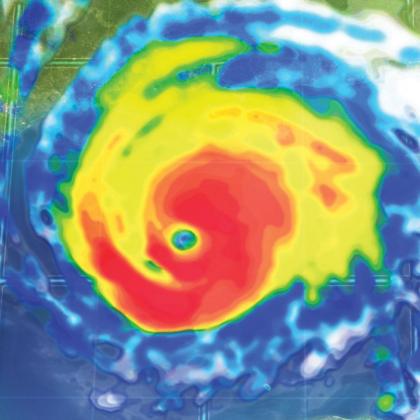
After Hurricane Laura ripped through Louisiana, twisting trees and downing timber, large-scale assessments of the damage the storm caused to the timber industry are just beginning. Early reports indicate that losses will be extensive.
“I don’t have the words in my vocabulary to relay the destruction this storm has caused,” said Robbie Hutchins, an area forestry agent with the LSU AgCenter.
Timber companies and the Louisiana Department of Agriculture and Forestry are doing extensive aerial surveys to properly assess the damage, but Hutchins said the storm even complicated the ability do those assessments.
“Some of the communication towers the aircraft use were damaged, and some of the aircraft fuel locations didn’t have power,” he said.
Satellite images and geographic information systems are being used by the U.S. Forest Service to make damage assessments as well.
Because of the scope of the damage, getting a complete picture of Laura’s impact could take months.
Hutchins has heard from several small private forest landowners who have reported a complete loss of their timber acreage.
Through modeling based on wind speeds, the Forest Service estimates that damaged pine alone could run the state’s four largest mills for one year, according to Hutchins.
Downed timber can be salvaged, but Hutchins said time is of the essence. Fallen timber will spoil quickly, especially in Louisiana’s climate. Also, conventional logging equipment can’t cut downed trees, and bringing in crews with chainsaws could violate some landowners’ insurance regulations.
A Hurricane Laura Response Task Force coordinated by Louisiana Forestry Association is helping with assessment and recovery. Michael Blazier, LSU AgCenter forestry researcher, said the task force is a coalition of state and federal natural resource agencies, private industry and AgCenter representatives.
“We’re collaborating on this to be as efficient as possible in determining the impacts of Hurricane Laura on our forestland, forest products facilities and loggers,” Blazier said.
AgCenter area forestry agents are working with landowners and stakeholders to assess damage, assign economic value to the damage and develop recovery plans.
Many of these landowners are 15 years out from recovering from Hurricane Rita.
“There were losses for Rita, but it would be a minor storm compared to Laura,” Hutchins said.
Southwest Louisiana, where Hurricane Rita hit, was also heavily affected by Hurricane Laura.
“Southwest Louisiana has some of the most productive forests in the United States, and early estimates indicate Laura led to timber losses comparable to what Louisiana lost in hurricanes Katrina and Rita combined,” Blazier said.
A challenge for timber landowners is that many rely on money made at harvest to site prep and replant tracks of land. Now those landowners have lost that harvest, and Hutchins said the storm damage will triple the cost of doing site prep on their land.
Hutchins said he knows several timber owners who have also lost their homes in addition to their timber.
“It is hard to understand how devastating this is,” he said.
